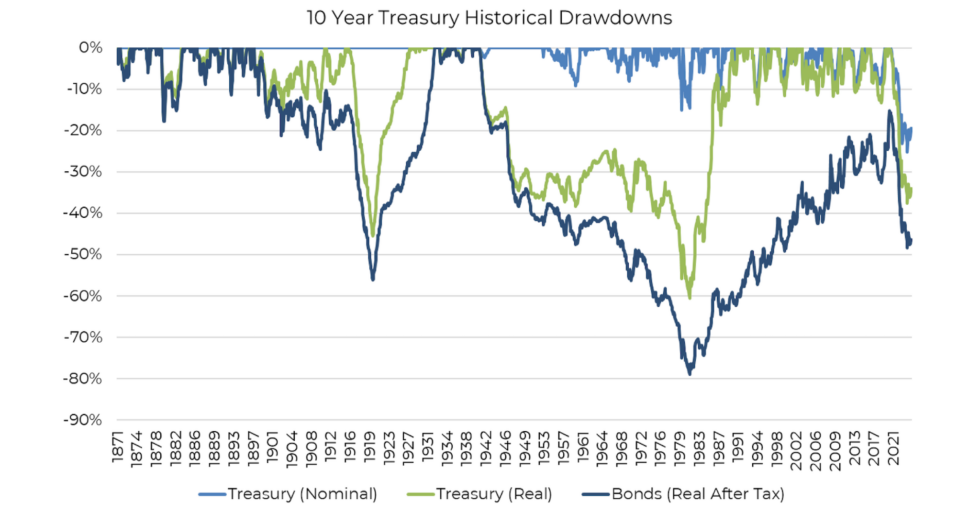Most buyers consider Treasury payments—the short-term, “risk-free” U.S. authorities debt—as the last word protected haven. No credit score danger, extremely liquid, assured by Uncle Sam. That is all true on a nominal foundation. T-bills have by no means had a drawdown or misplaced cash.
Nonetheless we dwell in a “actual” world, that means, all that issues is “after inflation”, or what is named “actual returns”.
Here’s a stat that blows up standard knowledge: In the course of the twentieth century, the peak-to-trough actual drawdown for U.S. T-bills, after adjusting for inflation, was almost -50%. (10-Yr US authorities bonds had been worse with a 60% max actual drawdown.)
That’s proper. Your “protected” funding quietly misplaced over half its buying energy.
I polled buyers to see what number of truly understood this uncomfortable actuality.
The bulk, almost two thirds of respondants, underestimated the danger. A full 16% assumed T-bills had zero or small drawdownxs. And it’s no shock—this isn’t one thing Wall Road talks about when pitching security and safety.
What you see is a graveyard of misplaced buying energy throughout prolonged inflationary regimes—World Wars, the Nineteen Seventies, you title it. On paper, your T-bills stayed intact. However in actual phrases, your wealth slowly evaporated.
Even worse, in the event you’re a tax payer, the return on bonds after taxes is mainly….zero. by way of our mates at Aptus.

The lesson?
There’s no such factor as a free lunch. Even the most secure property carry hidden dangers—usually within the type of inflation erosion, alternative price, or long-term drawdowns that fly below the radar.
If you happen to park all of your capital in “protected” money equivalents for many years, historical past exhibits you’re nonetheless in danger—simply in a distinct, quieter manner. We’ll come again to this subject later once we study what precisely is the most secure asset?

